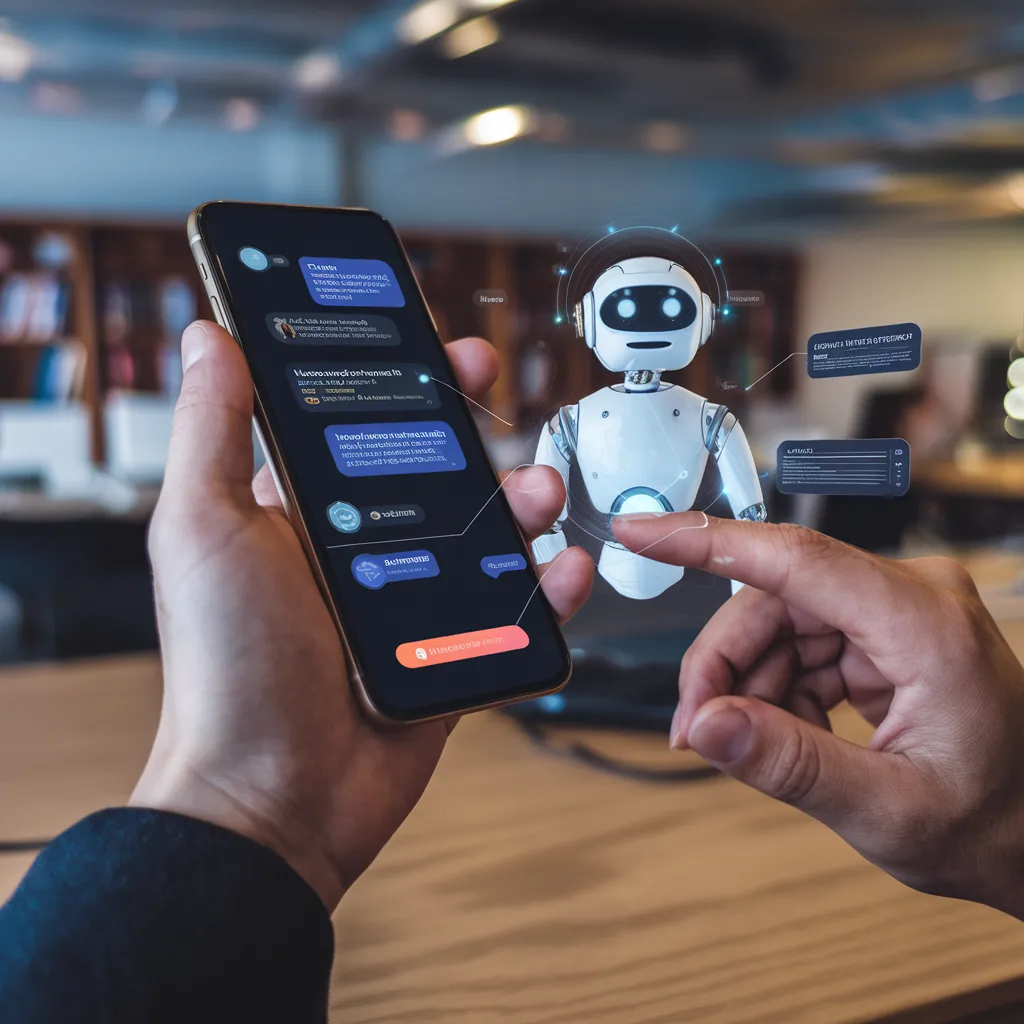
The concept of identity has expanded far beyond human users. Non-human identity (HNI) refers to the digital identities assigned to entities that are not individual persons, such as software applications, IoT devices, AI agents, and more. As our digital ecosystems grow increasingly complex, understanding and managing these non-human identities has become crucial for security, access control, and accountability.
1. History
The history of non-human identity can be traced back to the early days of computing, with concepts like service accounts and daemon processes. However, the explosion of cloud computing, IoT, and AI has dramatically increased both the importance and complexity of non-human identity management.
2. Types of Non-Human Identities
2.1 Software Applications and APIs
Software applications and APIs are often assigned their own identities to interact with other systems securely. These identities typically use API keys or OAuth tokens for authentication.
2.2 Internet of Things (IoT) Devices
IoT devices, from smart home appliances to industrial sensors, require unique identities to securely communicate and be managed within networks.
2.3 Artificial Intelligence (AI) Agents and Machine Learning Models
As AI systems become more autonomous, they need their own identities to interact with other systems, access data, and be held accountable for their actions.
2.4 Robotic Process Automation (RPA) Bots
RPA bots automate repetitive tasks and often require their own identities to access various systems and applications securely.
2.5 Service Accounts and Daemon Processes
These are background processes or accounts used by operating systems and applications to perform specific functions, often with elevated privileges.
2.6 Virtual and Augmented Reality Avatars
In VR and AR environments, avatars represent users or AI entities and require identities to interact within these digital spaces.
2.7 Blockchain Smart Contracts
Smart contracts on blockchain platforms have their own identities, typically represented by their address on the blockchain.
3. Technical Foundations of Non-Human Identity
3.1 Identity Data Models for Non-Human Entities
Non-human identity data models often extend traditional Identity and Access Management (IAM) schemas. They may include attributes such as:
- Unique Identifier
- Type of Entity
- Owner or Responsible Party
- Creation and Expiration Dates
- Associated Permissions and Roles
- Cryptographic Keys or Certificates
The NIST Special Publication 800-63 provides guidelines for digital identity models that can be adapted for non-human entities.
3.2 Authentication Mechanisms
API Keys
API keys are simple, long-lived tokens used to authenticate API requests. While easy to implement, they lack granular control and can be security risks if not managed properly.
X.509 Certificates
X.509 certificates, based on public key infrastructure (PKI), provide strong authentication and are widely used for machine-to-machine communication. They're particularly useful for IoT devices and service-to-service authentication.
OAuth 2.0 for Machine-to-Machine (M2M) Communication
OAuth 2.0, particularly the Client Credentials grant type, is well-suited for M2M authentication. It provides secure, token-based access with fine-grained control and the ability to revoke access.
3.3 Authorization and Access Control
Role-Based Access Control (RBAC) for Non-Human Identities
RBAC assigns permissions to roles, which are then assigned to identities. This model can be extended to non-human identities, allowing for consistent access control across human and non-human entities.
Attribute-Based Access Control (ABAC)
ABAC uses attributes of the identity, resource, and environment to make access decisions. This flexibility makes it well-suited for complex non-human identity scenarios.
Policy-Based Access Control
Policy-based access control uses centrally managed policies to determine access rights. This approach can provide fine-grained control over non-human identity access.
3.4 Identity Lifecycle Management for Non-Human Entities
Managing the lifecycle of non-human identities involves:
- Creation: Establishing the identity with necessary attributes and credentials.
- Provisioning: Granting initial access and permissions.
- Monitoring: Tracking usage and detecting anomalies.
- Rotation: Regularly updating credentials to maintain security.
- Deprovisioning: Removing access when the identity is no longer needed.
Automated lifecycle management is crucial for maintaining security and compliance, especially in environments with large numbers of non-human identities.
4. Non-Human Identity in Cloud and Distributed Systems
4.1 Cloud Service Provider Identity Solutions
Major cloud providers offer specialized solutions for managing non-human identities:
AWS IAM Roles for EC2
AWS Identity and Access Management (IAM) roles can be assigned to EC2 instances, allowing applications running on these instances to securely access other AWS services without managing explicit credentials.
Azure Managed Identities
Azure Managed Identities provide an automatically managed identity in Azure Active Directory for applications, simplifying secret management.
Google Cloud Service Accounts
Google Cloud uses service accounts as identities for non-human entities, allowing fine-grained access control to Google Cloud resources.
4.2 Kubernetes Service Accounts and Workload Identity
Kubernetes uses Service Accounts to provide identities for pods. Workload Identity extends this concept to allow Kubernetes applications to securely access cloud services.
4.3 Serverless Function Identities
Serverless platforms like AWS Lambda, Azure Functions, and Google Cloud Functions provide managed identities for individual functions, allowing secure access to other services without explicit credential management.
4.4 Microservices and Service Mesh Identity Management
Service meshes like Istio provide identity and access management for microservices architectures. They offer features like mutual TLS authentication and fine-grained access policies between services.
5. Security Challenges and Best Practices
5.1 Threat Modeling for Non-Human Identities
Threat modeling for non-human identities should consider:
- Unauthorized access or impersonation
- Privilege escalation
- Data exfiltration
- Denial of service
- Supply chain attacks
The STRIDE model can be adapted for non-human identity threat modeling.
5.2 Secure Secret Management
Hardware Security Modules (HSMs)
HSMs provide a physical computing device that safeguards and manages digital keys for strong authentication. They are particularly useful for high-security non-human identity scenarios.
Vault Systems (e.g., HashiCorp Vault)
Vault systems provide a centralized solution for managing secrets, including those used by non-human identities. They offer features like dynamic secret generation, leasing, and revocation.
5.3 Rotation and Revocation Strategies
Regular rotation of credentials (e.g., API keys, certificates) is crucial for maintaining security. Automated rotation processes should be implemented to ensure consistency and reduce human error.
Immediate revocation capabilities are necessary for responding to security incidents. This often requires a centralized identity management system with real-time revocation features.
5.4 Monitoring and Auditing Non-Human Identity Activities
Continuous monitoring of non-human identity activities is essential for detecting anomalies and potential security breaches. This includes:
- Logging all authentication and authorization attempts
- Monitoring for unusual access patterns or privileges
- Regular review of active identities and their permissions
- Automated alerts for suspicious activities
Tools like Elastic Stack (ELK) or cloud-native solutions like AWS CloudTrail can be used for comprehensive logging and monitoring.
5.5 Zero Trust Architecture for Non-Human Identities
Zero Trust principles should be applied to non-human identities:
- Verify explicitly: Authenticate and authorize based on all available data points
- Use least privilege access: Provide just-in-time and just-enough-access
- Assume breach: Minimize blast radius and segment access
The NIST SP 800-207 provides a comprehensive framework for implementing Zero Trust Architecture.
6. Emerging Technologies and Future Trends
6.1 Decentralized Identifiers (DIDs) for Non-Human Entities
DIDs, as specified by the W3C, provide a decentralized approach to identity management that can be applied to non-human entities. This allows for more autonomous and self-sovereign non-human identities.
6.2 Self-Sovereign Identity (SSI) Concepts Applied to Non-Human Identities
SSI principles, when applied to non-human identities, can provide greater autonomy and control. This is particularly relevant for AI agents and IoT devices that may need to operate independently.
6.3 AI-Driven Identity Governance for Non-Human Entities
AI and machine learning are being leveraged to enhance identity governance for non-human entities. This includes anomaly detection, automated access reviews, and predictive access modeling.
6.4 Quantum-Safe Cryptography for Non-Human Identity Protection
As quantum computing advances threaten current cryptographic methods, quantum-safe algorithms are being developed to secure non-human identities in the post-quantum era.
7. Regulatory and Compliance Considerations
7.1 GDPR and Non-Human Data Processors
The General Data Protection Regulation (GDPR) has significant implications for non-human identities, particularly when they act as data processors. Key considerations include:
- Accountability: Organizations must ensure non-human entities processing personal data comply with GDPR principles.
- Data minimization: Non-human identities should only have access to the minimum data necessary for their function.
- Audit trails: Comprehensive logging of non-human identity activities is crucial for demonstrating compliance.
7.2 NIST Guidelines for Non-Human Identity Management
The National Institute of Standards and Technology (NIST) provides several guidelines relevant to non-human identity management:
- NIST SP 800-63: Digital Identity Guidelines
- NIST SP 800-145: The NIST Definition of Cloud Computing
- NIST SP 800-190: Application Container Security Guide
These guidelines offer frameworks for secure identity management that can be adapted for non-human entities.
7.3 Industry-Specific Regulations
Various industries have specific regulations that impact non-human identity management:
- Healthcare: HIPAA requires strict access controls and audit trails for all entities accessing protected health information, including non-human identities.
- Finance: PCI DSS mandates strict controls on identities accessing cardholder data, applying to both human and non-human entities.
- Critical Infrastructure: NERC CIP standards in the energy sector include requirements for managing identities of cyber assets.
7.4 Liability and Accountability for Non-Human Entity Actions
As non-human entities become more autonomous, questions of liability and accountability become more complex:
- Legal frameworks may need to evolve to address actions taken by AI agents or autonomous systems.
- Clear chains of responsibility must be established for actions taken by non-human identities.
- Logging and auditing become crucial for attributing actions to specific non-human identities and their responsible parties.
Conclusion
Non-human identity management is a critical component of modern digital ecosystems. As we continue to develop more complex, autonomous systems, the importance of securely managing these identities will only grow.
Key takeaways:
- Non-human identities encompass a wide range of entities, from IoT devices to AI agents.
- Robust technical foundations, including strong authentication and authorization mechanisms, are crucial.
- Cloud and distributed systems present both challenges and opportunities for non-human identity management.
- Security best practices, including threat modeling and zero-trust architectures, should be applied to non-human identities.
- Emerging technologies like DIDs and quantum-safe cryptography are shaping the future of non-human identity.
- Regulatory compliance and accountability are key considerations in non-human identity management.
- Successful implementation requires careful planning, integration with existing systems, and consideration of scalability and continuity.
As organizations increasingly rely on non-human entities to drive innovation and efficiency, investing in robust non-human identity management will be key to maintaining security, compliance, and operational effectiveness.
The field of non-human identity is rapidly evolving. Staying informed about new technologies, best practices, and regulatory changes will be crucial for organizations looking to leverage the full potential of non-human entities while managing associated risks.
https://ift.tt/iu8zEDb
https://ift.tt/ftBTLkN







